by Ferne Arfin 25 October 2020
Ten outdoor hauntings for this Halloween
You don’t have to go far in Britain to let ghosts and restless spirits scare you silly. Visit these 10 haunted landscapes and ruins to stay safely social distanced from other mortals while spirits swirl around you.
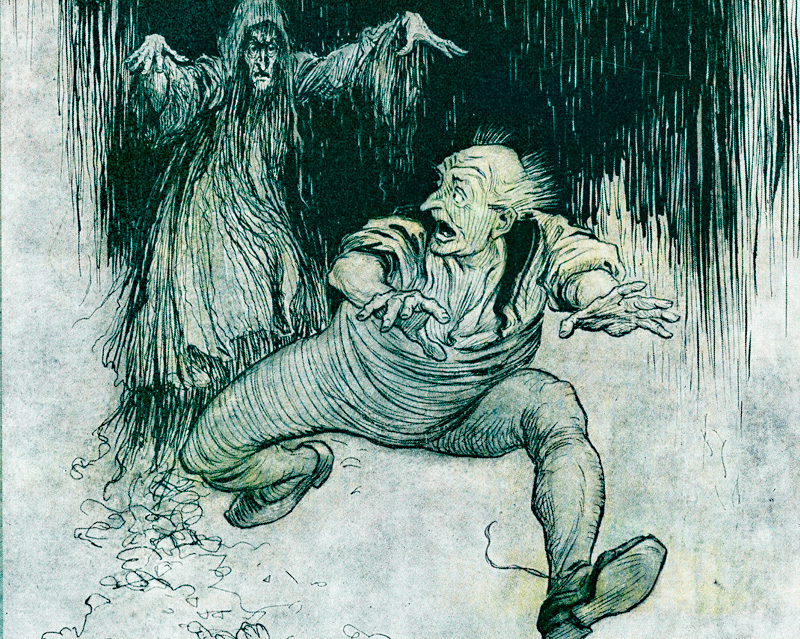
Public domain
All over Britain, the spirits are flying this Halloween. Ghosts, spooks, ghouls, witches and their familiars all come out to play for the witches sabbath. And with a past rich in headless queens, highwaymen, ruined castles, missing brides and abandoned abbeys you don’t have to descend into haunted cellars or dusty hidden rooms to find them. These 10 outdoor ghost walks and haunted places are perfect for socially distanced ghost hunting in 2020.
Explore this post
- The ghostly lovers of Minster Lovell Hall
- The swans of Mistley
- An evil squire and the hounds of hell
- Pluckley – England’s most haunted village
- Pendle Hill
- Whitby Abbey – Haunting your imagination
- Corfe Castle – A homicidal stepmother, an evil king and anarchy all round
- The Great Wood,Blickling Mausoleum Walk and the Ghost of Anne Boleyn
- Witches Wood, Lydford Gorge in Devon
- St Mary’s Vale, Monmouthshire
1.The ghostly lovers of Minster Lovell Hall
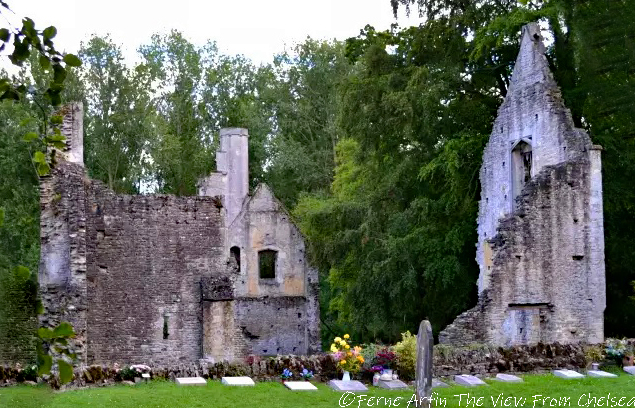 Legends of a lost bride and her wailing lover have always been told about this haunting place.
Legends of a lost bride and her wailing lover have always been told about this haunting place.
Minster Lovell Hall and Dovecote, set behind St Kenelm’s churchyard in an Oxfordshire hamlet of the same name, is an atmospheric ruin. It’s surrounded by dark, dank woods the deep, dark waters of the River Windrush. It seems a natural spot for a haunting or two and there are several stories connected with it. Over the centuries, ghostly wailing has been reported around the spot.
According to local legend, Francis Lovell, who had joined the losing side in the Wars of the Roses, fled back to his estate and hid in a vault at Minster Lovell Hall. He gave a servant the only key.
The servant died shortly after and no one was left to feed, water or rescue Lord Lovell and his dog. His skeleton, so the story goes, was found by workmen in 1708, surrounded by mouldy books and the skeleton of his little dog at his feet. Could this be the ghost who wails in the night?
Perhaps…but another, earlier, grislier tale – The Ghostly Bride and her Lover – is connected to this place. In this story, William Lovell’s bride disappeared during a game of hide-and-seek in the hall on her wedding night. Many years later, a servant found the body of a girl dressed in a bridal gown, well preserved in a leaden cool chest used for food storage. Legend, again, suggests that she hid in the chest during the wedding party and the lid fell shut, trapping her inside. As people tell this tale, it is William, wandering the halls searching for his bride, who moans and wails at night.
Of course, English Heritage, who manage the site, have no truck with any of this and present a straightforward, historical account of Minster Lovell Hall on their website. The site is outdoors, dog-friendly and free to visit every day, year-round, during daylight hours. Try visiting just before dusk for the spookiest vibe. There are good directions and a map on the site.
Where to stay after you’ve visited this outdoor haunting
Minster Lovell is only about 15 miles from Oxford and 11 miles from Blenheim Palace so well placed for a short British staycation. And there are two places to stay and dine. The Old Swan and Minster Mill are sister hotels, one a converted mill and the other a historic pub with a cosy, dog-friendly bar area where you can eat. The Minster Mill is on the River Windrush and the Old Swan is just across the street opposite the original mill race. I sampled them both, while under different ownership so I can’t vouch for the food, decor or service anymore. I can only tell you that the setting is lovely and they are just a short walk from Minster Lovell Hall. See what other travellers say about The Old Swan and The Minster Mill and then book on TripAdvisor.
2. The Swans of Mistley
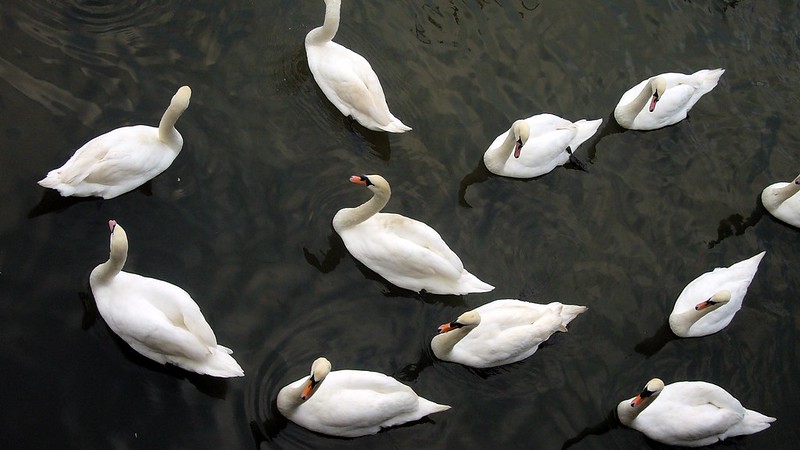 Mistley Swans in the River Stour, photo by Ian “Harry” Harris, ccl
Mistley Swans in the River Stour, photo by Ian “Harry” Harris, ccl
You wouldn’t think there would be anything spooky about numbers of beautiful swans but there is genuinely something uncanny about the hundreds of swans that flock to the village of Mistley on the River Stour in Essex. The tiny port, a few miles east of Manningtree, is home to a few North Sea trading vessels. It was also once the home of Matthew Hopkins, the notorious Witchfinder General of the 17th century.
That’s about when the swans first started showing up in Mistley, but their appearance had nothing to do with him. Historically, the village was a place where barley was traded and malted (part of the beer-making process). There were large silos and maltings there. The birds came to Mistley, at least from the 17th century, for the rich pickings of grain that blew off barges on the river and collected around the maltings. There is only one small malting company left and the birds probably stick around because local people feed them.
Still, nobody can ignore a swan that suddenly appears beside the road. And when we drove into town along the shore road from Manningtree we spotted one, then counted another, and another and another until we lost count at about 50. Later, we found out there are at least 250. I couldn’t help thinking of Matthew Hopkins and the souls of women he condemned for witchcraft who just might be lingering around.
How to get there and where to stay
Mistley is about 80 miles northeast of London, a mile east of Manningtree on the River Stour along the B1352. If you want more than just an uncanny experience, try a stay at the Mistley Thorn, a small inn with a very good restaurant. Matthew Hopkins, who is buried at a secret location in Mistley, once owned this inn and his ghost (along with several others) is said to still haunt the place.
Read reviews and book the Mistley Thorn with TripAdvisor.
3. An evil squire and the hounds of hell in Devon
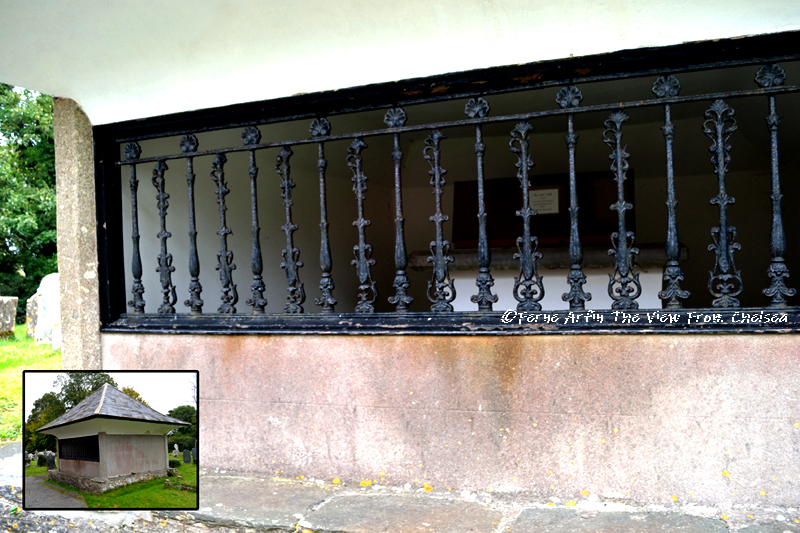 The tomb of evil Squire Richard Cabel III. Could this be the final resting place of a monster?
The tomb of evil Squire Richard Cabel III. Could this be the final resting place of a monster?
Holy Trinity Church, Buckfastleigh, Devon is a ruin just inside the southwestern border of Dartmoor. Unlike most church and abbey ruins in the UK which were destroyed and looted on the orders of Henry VIII, this 13th-century building has been subject to multiple arson attacks, and vandalism, most recently in 1992.
Why, in this quiet Devonshire town, would so much destruction be heaped on a small local church, like many other churches in the area? Could it be because it’s the final resting place of one of history and fiction’s most evil characters?
The looking tomb outside the church, the remains of Squire Richard Cabel III, the historical source and inspiration of Arthur Conan Doyle’s The Hound of the Baskervilles.
The final resting place of a monster?
Dozens of legends surround Squire Richard Cabel III who died in 1677, a man with such an evil reputation that the locals sealed his grave with an extra heavy stone to prevent him from rising and wandering in the night. They say he sold his soul to the devil to practice black magic and that he travelled on Dartmoor in the company of vicious dogs. There are even stories of his using his dogs to hunt virgins in the village. Some say he killed his unfaithful wife others that he chased her across the moors and beat her savagely until her faithful dog attacked him and tore out his throat.
Before he died, ghostly, glowing dogs appeared on the moor and around his home, Brooke Manor. The barking dogs were said to have surrounded his grave. People say that on the anniversary of his death their howls can still be heard.
Keeping the Devil out…or in
The kiosk shaped tomb built around his grave is there to discourage Satanists and practitioners of the dark arts from freeing his soul. You can peer inside through an iron grille on the side of the tomb that faces the church. The other side is sealed with a closed wooden door – apparently to prevent the Devil from entering. And, they say that as you walk around the tomb clockwise (or counterclockwise – depends on who’s telling the story) and then put your finger through the grate (or the keyhole of the wooden door – again, different teller – different story), it will be nibbled by the devil and/or Richard Cabel’s imprisoned soul.
Spooky
How to get to this outdoor haunting and where to stay
Buckfastleigh is about halfway between Exeter and Plymouth off the A38 in Devon, England. Set your SatNav or GPS device for Holy Trinity Church, Church Hill, Buckfastleigh TQ11 0EZ. The road deadends at a cemetery and you can see the bell tower of the church from there.
Because it’s on the edge of Dartmoor – in itself a rather atmospheric place to visit (carefully) for Halloween, there’s plenty of accommodation in the area. After your close encounter with the devil, you might want to try the accommodations at nearby Buckfast Abbey. This working monastery has a hotel, self-catering cottages and group accommodations in the lovely setting of the historic Abbey.
Read reviews and book accommodation at Buckfast Abbey on TripAdvisor
4. Pluckley – England’s most haunted village
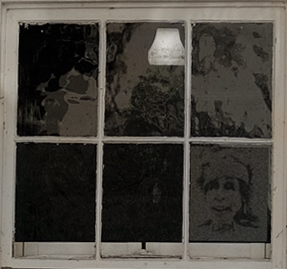 You may have seen this little Kent village, with a population of about 1,000 – and 14 ghosts (12 of them official), in the British television series that made Catherine Zeta Jones a household name, The Darling Buds of May. Who’d have guessed that Guinness World Records has named it the most haunted village in England? Among the shuddery phantoms are two women who roam the graveyard of St. Nicholas Church – the Red and White Ladies – as well as a highwayman nailed to a tree (eeewww), a ghostly team of coach and horses, a forest full of screaming wraiths, and the usual contingent of old school and old pub ghosts. Pick a quiet night to have a mooch around. Most ghosts stay home, like the locals, on Halloween. If you have the courage to go it alone, this self-guided ghost walking tour will take you to all the most haunted spots.
You may have seen this little Kent village, with a population of about 1,000 – and 14 ghosts (12 of them official), in the British television series that made Catherine Zeta Jones a household name, The Darling Buds of May. Who’d have guessed that Guinness World Records has named it the most haunted village in England? Among the shuddery phantoms are two women who roam the graveyard of St. Nicholas Church – the Red and White Ladies – as well as a highwayman nailed to a tree (eeewww), a ghostly team of coach and horses, a forest full of screaming wraiths, and the usual contingent of old school and old pub ghosts. Pick a quiet night to have a mooch around. Most ghosts stay home, like the locals, on Halloween. If you have the courage to go it alone, this self-guided ghost walking tour will take you to all the most haunted spots.
How to get there and where to stay.
The Barrow House is a very charming pub hotel in the nearby town of Egerton, less than two miles away. Sadly, as of this writing it has not yet reopened because of COVID19, but it is worth checking out their website for another visit in the future, meanwhile, check TripAdvisor to see what’s available in Ashford, the Eurostar terminal town, about seven miles away. Pluckley itself is about 50 miles southeast of London via the M20 and the A20.
5. Pendle Hill
During the summer months, the wild moorland and heath of Pendle Hill overlooks farms and villages – a pleasant place to walk or  cycle. But when winter sets in, with its short, grim, grey days, it’s easy to imagine how bleak it must have been in 1612 when the infamous Pendle Witch Trials took place. The women, and men, who were accused of witchcraft were force-marched ten miles over this untamed landscape to Lancaster Castle where they were tried, imprisoned and hanged. You can let your imagination run wild sniffing out outdoor hauntings on Halloween as you tackle the seven and a half mile Walking with Witches Trail that passes some of the key places associated with the witch hysteria. Visit Lancashire has conveniently mapped it out in two loops that you can try separately. Dress warmly and wear sturdy shoes.
cycle. But when winter sets in, with its short, grim, grey days, it’s easy to imagine how bleak it must have been in 1612 when the infamous Pendle Witch Trials took place. The women, and men, who were accused of witchcraft were force-marched ten miles over this untamed landscape to Lancaster Castle where they were tried, imprisoned and hanged. You can let your imagination run wild sniffing out outdoor hauntings on Halloween as you tackle the seven and a half mile Walking with Witches Trail that passes some of the key places associated with the witch hysteria. Visit Lancashire has conveniently mapped it out in two loops that you can try separately. Dress warmly and wear sturdy shoes.
Where to stay for this outdoor haunting
Because of COVID19, this part of the country is at a high level, Tier 3 alert and visiting from outside the region or staying overnight isn’t encouraged. Until the crisis is over, this is one for Lancashire locals only.
6. Whitby Abbey haunting your imagination
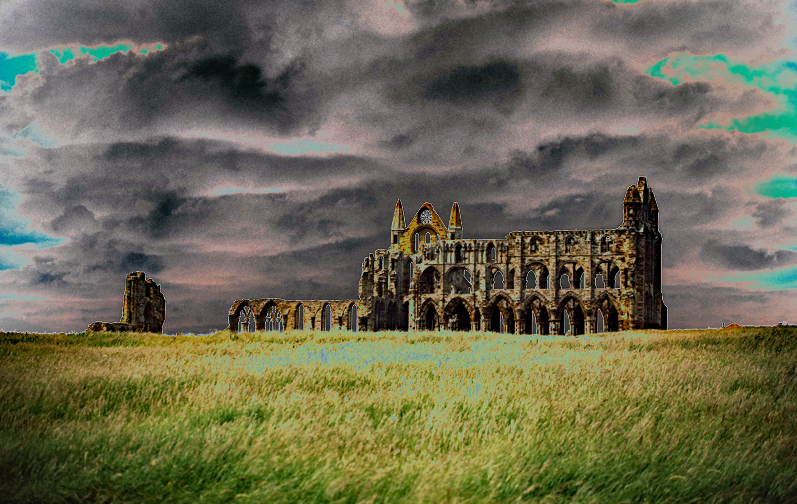 Edited photo by Lison Zhao on Unsplash
Edited photo by Lison Zhao on Unsplash
The ruins of Whitby Abbey are a haunting sight above the little port town on the Yorkshire coast. The abbey was built in 657 and was the site of the Synod of Whitby in 664. Up until that point, the Anglo Saxons had been converted to Christianity by both the Celtic and the Roman church. The Synod gave precedence to the authority of the Roman Church, established the date of Easter according to the Gregorian calendar and placed the authority of the pope over England.
But it is the view of the Abbey, especially at dusk, that makes this Yorkshire’s most iconic site and chills the blood. Bram Stoker was so impressed by it during a visit to Whitby that he was inspired to write Dracula. The Abbey is where the shipwrecked Count with his coffin full of soil first came ashore in England. (You can also see the Chelsea house where he wrote it on a Chelsea blue plaque walk.)
The pretty coastal town has plenty of haunting folklore of its own without Stoker’s story. At least five ghostly hauntings in fact.
If you fancy a personal encounter with a ghost, try a night at Bagdale Hall Hotel, a grim looking Tudor hall that is reportedly haunted by a former owner who was executed for piracy.
Check out reviews and book this hotel on TripAdvisor.
7. Corfe Castle – A homicidal stepmother, an evil king and anarchy all round
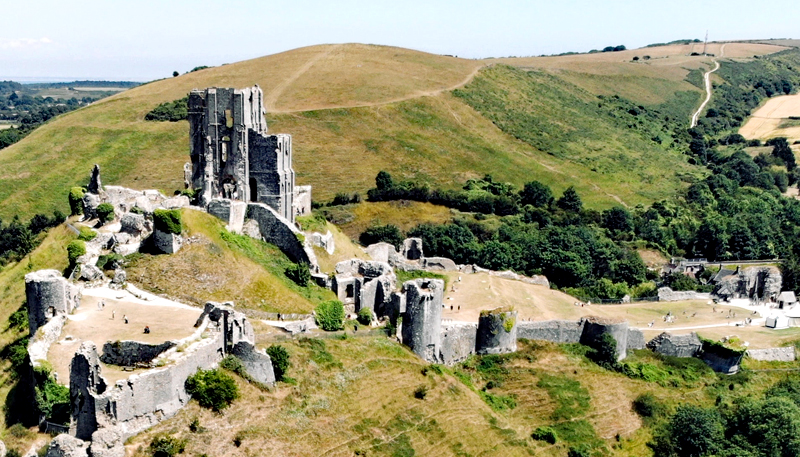 Photo by Benjamin Elliott on Unsplash
Photo by Benjamin Elliott on Unsplash
The bones of Corfe Castle loom over the Dorset town of Wareham, Isle of Purbeck, terrifying at dusk. When the castle was destroyed in the English Civil War, the miasma of its foul history finally took visible form in the tortured shapes of the ruins. But it’s been haunted by murder and torture most foul for most of its 1000 years.
In 978, in the oldest surviving part of the castle, Anglo Saxon Queen Elfryda arranged the murder of her stepson, the teenaged King Edward, She probably did to pave the way to the throne for her son, known as Ethelred the Unready. The young king’s body was disposed of without ceremony but when he was disinterred a year later, his body was miraculously preserved. Eventually, as Edward the Martyr, he was made a saint. His remains are now kept at the Orthodox Church of St Edward the Martyr in Surrey and he is still revered as a saint.
In the 12th century, the only son of King Henry I died in a shipwreck. Henry tried to force his followers to accept his daughter Mathilda, William the Conqueror’s grandaughter, as his heir. The turmoil that followed, on both sides of the English Channel, lasted for 20 years and was known as The Anarchy.
Prisoners abandoned in the dungeons
But probably the worst deeds at the castle – and the ones that loose the demons of hell on Halloween – were committed by evil King John. After a family war with his nephew, Prince Arthur of Brittany, John captured Arthur along with his sister Eleanor and their knights. Arthur was murdered and Eleanor was kept as a royal prisoner. But the knights got no such courtesy. They were thrown into dungeons where 22 of them died of starvation.
They were not the last prisoners to be starved to death in King John’s oubliette (literally a place where something is thrown away to be forgotten) he condemned the wife of a disloyal nobleman and her son to death by starvation.
If there are vengeful spirits around to howl on windy nights. This place has certainly earned them.
How to visit Corfe Castle for an outdoor haunting
Corfe Castle is a National Trust property. Although most of the site is outdoors, the Trust is currently requiring advanced bookings for time-specific visits. And the site and visitor centre are only open during daylight hours.
But the spookiness of this site is best appreciated from a distance. And luckily, there is a gentle walk outside the castle grounds that you can visit freely. The Corfe Common History Walk traverses the largest area of common lands in Dorset and one of the largest commons in England. It begins and ends at the castle ticket office, passes 4,000-year-old burial mounds along the way and offers excellent changing views of this haunting place. The walk is free but if you want to visit the castle, its visitor centre, shop and cafe, you do have to book.
I’d be willing to bet that Morton Manor Hotel has a few ghosts. It’s reputed that Queen Elizabeth I stayed in this Grade II Elizabethan manor house at the base of Corfe Castle. See what other visitors report and book a night.
8. The Great Wood and Blickling Mausoleum Walk
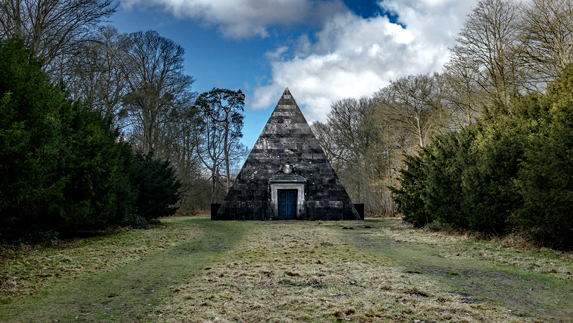 Blickling Mausoleum, Photo by Colin, ccl
Blickling Mausoleum, Photo by Colin, ccl
The Blickling Estate in Norfolk dates from the 14th century. This is one location where the parkland and forest are eerier than the Jacobean house. The land is drenched in sorrow and sorrowful ghosts. It’s the Boleyn family out ahaunting here.
Though Anne Boleyn grew up at Hever Castle, she was born in the Boleyn family’s ancestral manor at Blickling. They say the ghost of her father, Sir Thomas Boleyn wanders the place, full of regret that he did nothing to save his daughter or her brother, both executed on the orders of Henry VIII. Anne too materializes now and then, arriving in a coach driven by a headless coachman driving team of headless horses and carrying her head in her arms.
People say the eeriest part of the estate is the Mausoleum Walk through the Great Wood. The 200-year-old pyramid-shaped mausoleum is the tomb of the 2nd Earl of Buckinghamshire’s and his two wives. Though unrelated to the Boleyns, the strangeness of the tomb, surrounded by twisted trees on the edge of an ancient forest, is more than enough to give you chills.
How to visit
This is a National Trust property and during the Covid-19 crisis advance booking is required. The estate is open every day and admission covers the Jacobean house, the gardens, the parkland and parking. It’s 15 miles north of Norwich on the A140 Norwich to Cromer road.
More haunted woods
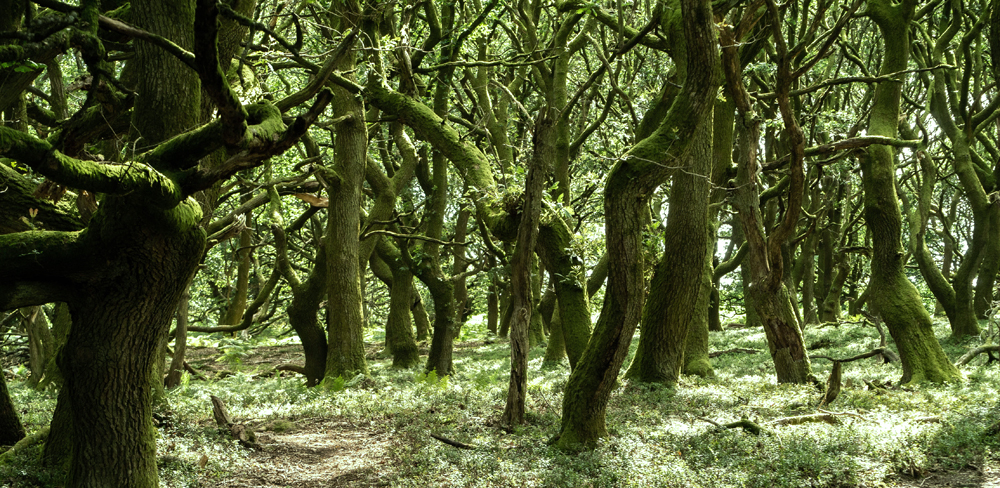 St Mary’s Vale, Monmouthshire in the Welsh borders. Photo by Gioconda Beekman, ccl
St Mary’s Vale, Monmouthshire in the Welsh borders. Photo by Gioconda Beekman, ccl
The National Trust seems to be awash with haunted woodlands and dark creepy paths. Two more than you might want to explore are:
9. Witches Wood, Lydford Gorge in Devon –
An ancient wooded gorge on the edge of Dartmoor. Along the path, the Whitelady waterfall is named for a ghost that haunts it. The gorge was once the home of an outland band known as The Gubbins. Currently, a circular walk to the waterfall and tea-room are all that are open and advanced booking is required.
10. St Mary’s Vale, Monmouthshire –
In the autumn, bare twisted oaks and beeches cling to the steep sides of this valley, loom out of the mist and creak in the wind. The Welsh Border Marshes are wild and spooky and this south Wales valley is no exception. It’s reputed to be the haunting grounds of Jack ‘O Kent, the giant who disputed with the Devil. There are no facilities except for a small parking lot at this Welsh borders site and no entrance fee.



 Ferne Arfin 2020
Ferne Arfin 2020 Zack Woolwine, Unsplash.com
Zack Woolwine, Unsplash.com
Trackbacks & Pingbacks
[…] Leeds Castle (known as the loveliest castle in England); Sissinghurst Castle & Gardens; Pluckley (reputed to be the most haunted village in England), and the Ashford International Station for Eurostar and other trains to Continental Europe are […]
[…] Eden in the grounds of the castle. A grimmer and spookier apparition of Anne is said to appear at Blickling House in Norfolk. Her headless ghost, in a coach driven by a headless coachman, and pulled by a team of headless […]
[…] If spending time out of doors in Britain’s most haunted places appeals to you, (especially as indoor ghost hunts are off-limits during the COVID19 crisis) check out my recommendations for outdoor hauntings for Halloween. […]
Leave a Comment
What do you think?Please add your comments and suggestions here.